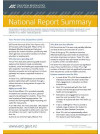This report documents the findings of ERO's 2013 evaluation of Teen Parent Units. ERO found that most of the Units were operating well.
Methodology
This review was carried out during Term 3, 2013. ERO reviewers visited each Teen Parent Unit (TPU) and observed programmes, spoke with students, teachers, school leaders and board trustees, and reviewed student and TPU plans and records.
The specific evaluation questions were:
- How effective are TPUs in promoting and supporting positive outcomes for students?
- How well do processes for induction, individual planning and support, and transition promote student engagement and success at TPUs?
- What is the quality of teaching and learning at the TPUs?
- How well do TPUs work within their educational and community context to promote student outcomes?
- How effective is the leadership, management and organisation of the TPUs?
The evaluative framework was supported by specific indicators of effective practice at TPUs. [9] These indicators were used in combination with ERO’s Education Indicators for School Reviews.
A synthesis sheet was used to record the data and identify key findings from each TPU review. This information was also used to prepare an individual report for each unit. Following the final visit to a TPU, the review team came together to discuss and analyse the overall findings. This meeting was used to help with moderation of ERO’s findings across the country and to assist in the preparation of this national report.
Some of the recommendations of this report were developed with joint input from the Ministries of Education, Social Development and Health. The involvement of these agencies reflected the willingness for cross-agency work to improve the planning, monitoring and support for TPUs.
Key Results
Breakdown of the overall effectiveness of the TPUs
| Innovation and choeive | Mostly effective |
Less engaging teaching and learning |
Poorly performing |
| 5 | 10 | 3 |
3
|
Most of New Zealand’s Teen Parent Units (TPUs) are performing well. Fifteen of the 21 units in this evaluation demonstrated practices that led to better educational, social and health outcomes for students. Many of the students at these TPUs had previously struggled in mainstream education, and following the birth of their children, would have been unlikely to return to normal secondary schooling.
Five of these 15 TPUs were particularly ‘innovative and cohesive’ in their approach. These TPUs had coordinated systems, teaching and support. They responded well to student needs and aspirations. The 10 TPUs that were ‘mostly effective’ had similar qualities to the ‘innovative and cohesive’ TPUs, although they also had a variety of moderate areas where they could improve.
Six TPUs were not performing well. Three of these had ‘less engaging teaching and learning’ programmes. Some of the students at the less engaging TPUs improved their education, health and social outcomes, although ERO also identified significant development issues at these units. The final three TPUs were ‘poorly performing’. These had several significant areas that affected their performance. High numbers of students at the ‘poorly performing’ units had not significantly improved their educational, social and health outcomes.

